Javier M. Antelis
Deep learning for gravitational-wave data analysis: A resampling white-box approach
Sep 09, 2020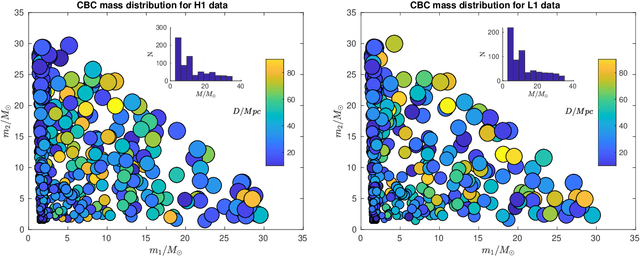
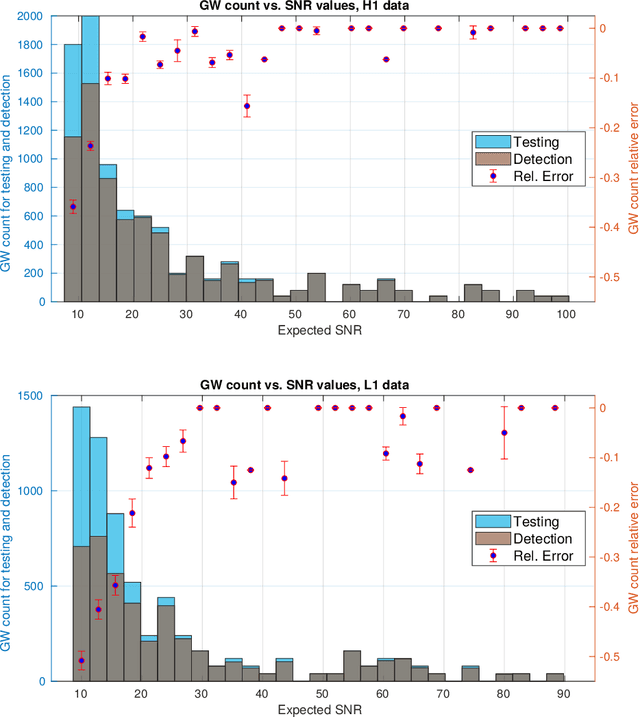
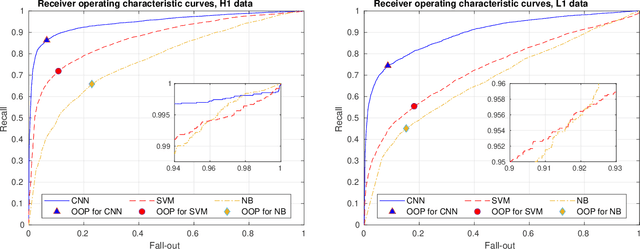
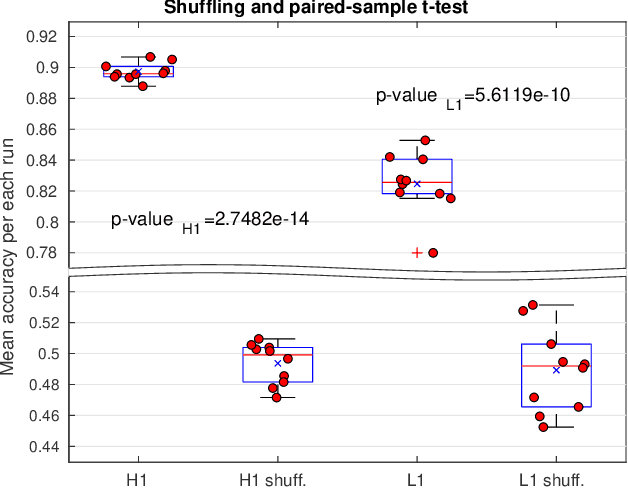
Abstract:In this work, we apply Convolutional Neural Networks (CNNs) to detect gravitational wave (GW) signals of compact binary coalescences, using single-interferometer data from LIGO detectors. As novel contribution, we adopted a resampling white-box approach to advance towards a statistical understanding of uncertainties intrinsic to CNNs in GW data analysis. Resampling is performed by repeated $k$-fold cross-validation experiments, and for a white-box approach, behavior of CNNs is mathematically described in detail. Through a Morlet wavelet transform, strain time series are converted to time-frequency images, which in turn are reduced before generating input datasets. Moreover, to reproduce more realistic experimental conditions, we worked only with data of non-Gaussian noise and hardware injections, removing freedom to set signal-to-noise ratio (SNR) values in GW templates by hand. After hyperparameter adjustments, we found that resampling smooths stochasticity of mini-batch stochastic gradient descend by reducing mean accuracy perturbations in a factor of $3.6$. CNNs were quite precise to detect noise but not sensitive enough to recall GW signals, meaning that CNNs are better for noise reduction than generation of GW triggers. However, applying a post-analysis, we found that for GW signals of SNR $\geq 21.80$ with H1 data and SNR $\geq 26.80$ with L1 data, CNNs could remain as tentative alternatives for detecting GW signals. Besides, with receiving operating characteristic curves we found that CNNs show much better performances than those of Naive Bayes and Support Vector Machines models and, with a significance level of $5\%$, we estimated that predictions of CNNs are significant different from those of a random classifier. Finally, we elucidated that performance of CNNs is highly class dependent because of the distribution of probabilistic scores outputted by the softmax layer.
Enabling real-time multi-messenger astrophysics discoveries with deep learning
Nov 26, 2019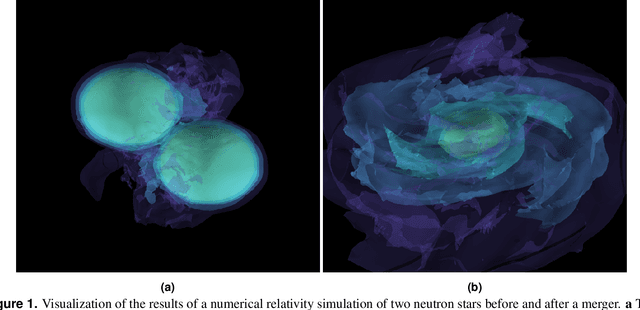
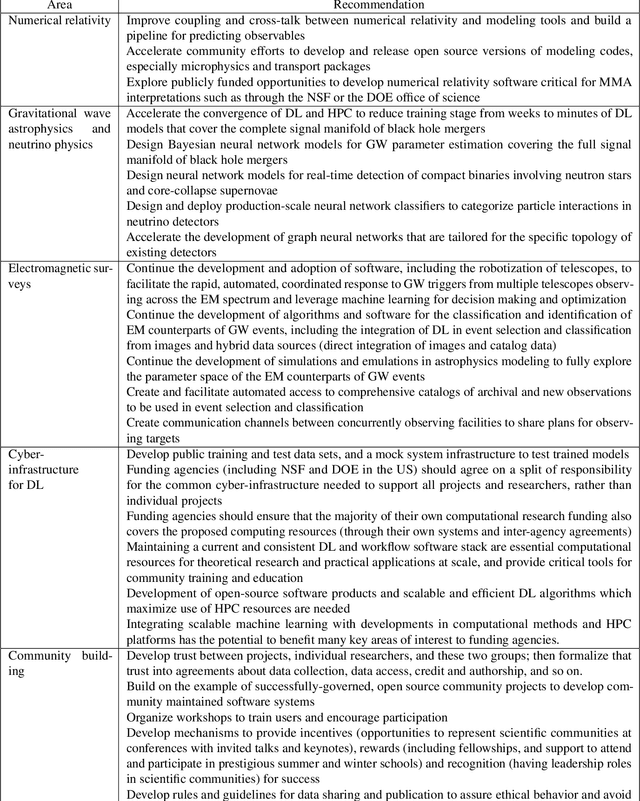
Abstract:Multi-messenger astrophysics is a fast-growing, interdisciplinary field that combines data, which vary in volume and speed of data processing, from many different instruments that probe the Universe using different cosmic messengers: electromagnetic waves, cosmic rays, gravitational waves and neutrinos. In this Expert Recommendation, we review the key challenges of real-time observations of gravitational wave sources and their electromagnetic and astroparticle counterparts, and make a number of recommendations to maximize their potential for scientific discovery. These recommendations refer to the design of scalable and computationally efficient machine learning algorithms; the cyber-infrastructure to numerically simulate astrophysical sources, and to process and interpret multi-messenger astrophysics data; the management of gravitational wave detections to trigger real-time alerts for electromagnetic and astroparticle follow-ups; a vision to harness future developments of machine learning and cyber-infrastructure resources to cope with the big-data requirements; and the need to build a community of experts to realize the goals of multi-messenger astrophysics.
* Invited Expert Recommendation for Nature Reviews Physics. The art work produced by E. A. Huerta and Shawn Rosofsky for this article was used by Carl Conway to design the cover of the October 2019 issue of Nature Reviews Physics
 Add to Chrome
Add to Chrome Add to Firefox
Add to Firefox Add to Edge
Add to Edge